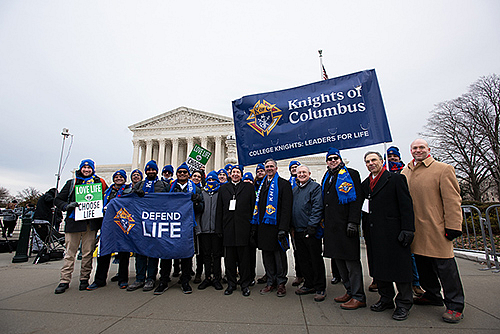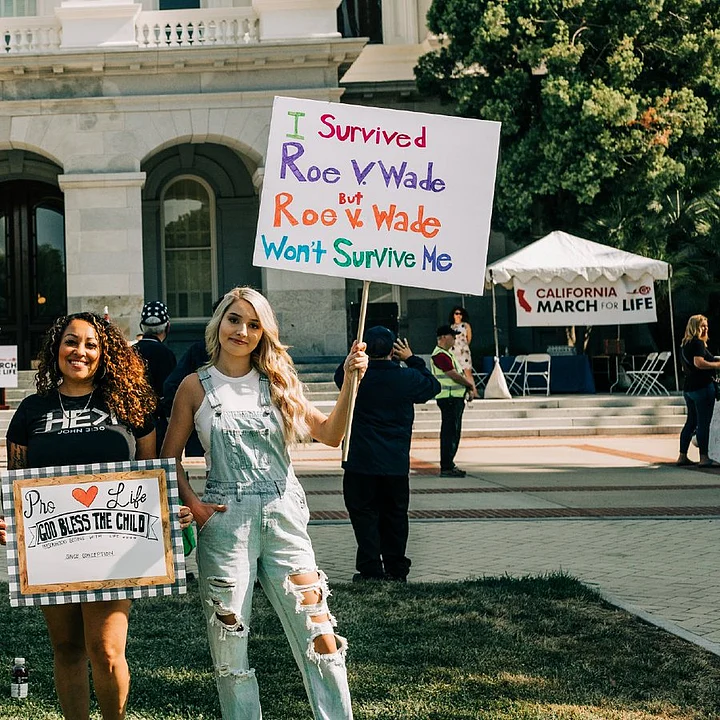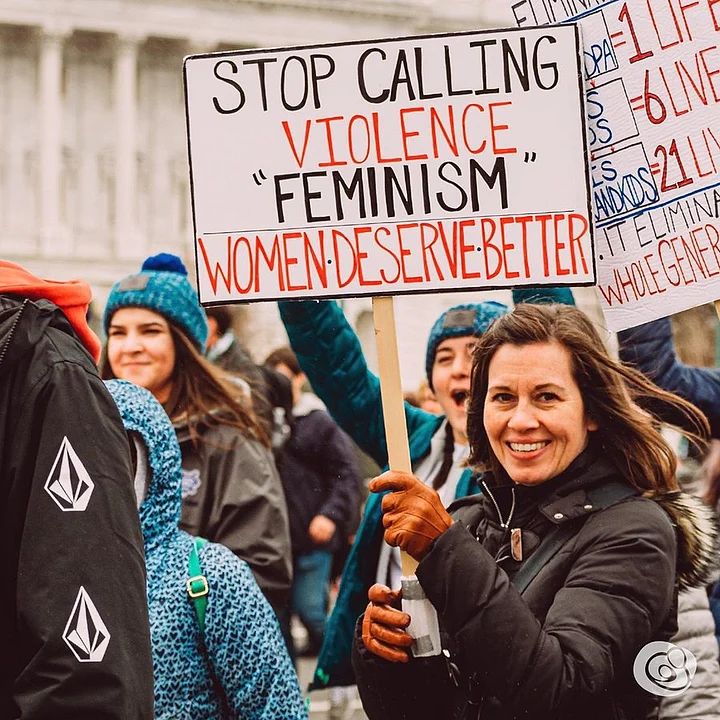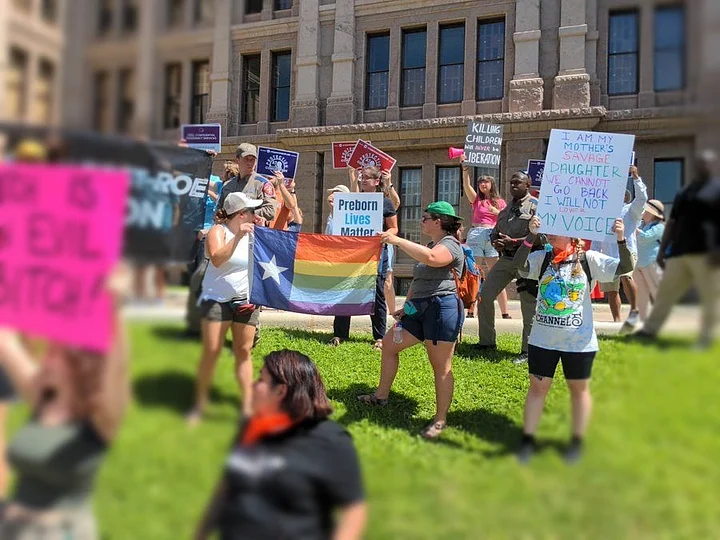Abortion clinics in the US are not safe places, certainly none in abortion-unfriendly states. Physicians dash through private entrances to avoid aggressive, profanity-spewing protesters. Trained volunteers are needed to escort patients as they drive through angry ‘pro-life’ radicals.
The 1994 federal Freedom of Access to Clinic Entrances Act makes it illegal to physically obstruct entrances, use force or threats, conduct sit-ins, in a way that interferes with clinic workers or patients seeking abortions. But the reality is otherwise: Carrying crosses, rosaries, and pictures of foetuses, screaming demonstrators block cars, tap on windows, throw foetus plastic dolls, and get into altercations.
Abortion Clinics Have Been Forced to Become Strongholds
A Washington-based family medicine physician specialising in reproductive health care, Dr Anuj Khattar has experienced law being violated: “I have worked at clinics where they (anti-abortion activists) get on top of ladders. They are not allowed on private property. Usually abortion clinics have very high walls, but they climb up ladders and aggressively yell at patients using loud speakers. As part of our training we are often told to ignore and not engage with them.”
- 01/06
An anti-abortion protest in the US.
(Photo Courtesy: Twitter/@March_for_Life)

- 02/06
Abortion clinics in USA are not safe places, certainly none in abortion-unfriendly states.
(Photo Courtesy: Twitter/@March_for_Life)

- 03/06
An anti-abortion parade.
(Photo Courtesy: Twitter/@LiveAction)

- 04/06
Anti-abortion protest.
(Photo Courtesy: Twitter/@March_for_Life)

- 05/06
Anti-abortion protest.
(Photo Courtesy: Twitter/@March_for_Life)

- 06/06
Image used for representational purposes only.
(Photo: iStock/ Altered by The Quint/Kamran Akhter)

The security threat goes far beyond this daily ‘nuisance’. With steel doors, bullet proof glass, thick concrete window-less walls, tall fences, armed security guards, panic buttons, and security drills, American abortion clinics have been forced to become strongholds. And those offering abortion access have stayed strong.
“For people providing abortion care this is not new. We have been dealing with this fear all these years. Providers, nurses, and doctors are always very vigilant, watching their step. In a country, with mass shootings regularly, I accept and understand that if someone hates you, then there is little that you can do to make them not hate you,” says Dr Khattar.
The National Abortion Federation reported that death or other threats rose from two in 2010 to 200 in 2020. Hate mail, harassing phone calls and online vitriol rose from 448 cases in 2010 to more than 28,000 in 2020. Meanwhile, incidents of clinic obstruction rose from 79 in 2012 to 2,712.
Abortion-Related Violence Rose in US Following Roe vs Wade Ruling in 1973
An NAF report says, “Anti-abortion individuals and groups exploited the COVID-19 pandemic, racial justice uprisings, and 2020 elections as opportunities to harass abortion providers.”
Abortion providers reported a spike in vandalism, assault and battery, death threats, stalking, and suspicious packages. The NAF observed an ‘alarming trend of armed, white supremacist individuals’ congregating outside facilities.
Following the Roe vs Wade decision in 1973, abortion-related violence rose sharply in the United States; this included bombings, arson, and assault. According to the NAF, since 1990, 11 abortion providers in the country have been killed, and 26 have been the victim of an attempted slaying.
In 1993, Dr David Gunn was fatally shot outside his abortion clinic in Florida, the first known murder of an abortion provider in the US. A 2015 attack on Planned Parenthood in Denver area killed three people. A decade earlier, three medical sites providing abortion services in Pensacola were bombed by two men.
A long time abortion provider, Dr George Tiller, was murdered in Wichita, Kansas - shot in the head while attending church in 2009, by an anti-abortion zealot. To keep his work alive, a colleague of the slain doctor founded the Trust Women clinic on the site in Kansas, and later opened another one in Oklahoma.
While murders might have become less common, reproductive-rights advocates mark a recent increase in other violence as several states have passed trigger laws to make abortion illegal immediately if the US Supreme Court over turns Roe vs Wade.
'Fly-in Physicians' Offer Abortion Care in Restrictive States But the Attacks Make Their Job Harder
Harm done to even one doctor can prevent hundreds of abortions. As it is, there are only a handful of clinics – only one in some – in restrictive states, providing abortions to thousands of women each year. On top of that it is almost impossible to hire local physicians to perform abortions.
The few brave local doctors who don’t have a moral dilemma in offering abortion care, face concerns for their safety. They get chased, shouted at, and accosted in public places.
Most physicians remove location tags from social media posts to avoid their homes being targeted, where many install enhanced security. A majority of the 1,700 abortion providers live in urban areas like New York, San Francisco, Seattle, etc, not in states which are hostile to abortion rights.
Abortion providers are spread unevenly across the country. To manage this imbalance, a program was initiated in 2016 to match clinics needing physicians with those who could travel to work. There are approximately 100 doctors commuting across state lines to perform abortions. Referred to as 'fly-in physicians', Dr Khattar is one of them.
He has been traveling regularly to clinics in Montana, Tennessee, Oklahoma, and Texas, a few days every month. He sees 25 to 30 patients daily on an average, and about 40 patients on a busy day. He stays committed in spite of negative experiences.
“Once I testified against an anti-abortion bill in Washington. It was broadcast on an anti-choice network and somehow got linked got to my FB account. I had to take a pretty long hiatus from FB. I am not on any social media. It is not worth my mental health!” says Dr Khattar.
Abortion Training is Not Mandatory at Medical Schools
Another reason the pool of abortion providers is limited is because abortion training is not mandatory at medical schools in the US.
A 2014 committee report of the American College of Obstetricians and Gynecologists noted that, “Despite the importance of access to safe abortion, residency training in abortion care has been limited, even in obstetrics and gynecology residencies."
"There are three general approaches to abortion care training: ‘opt out,’ in which training is routinely integrated into residency training but residents with religious or moral objections can opt out of participation; ‘opt in,’ in which training is available but not routinely scheduled; and programs in which no training is provided. The nature of opt-in training places the burden to create a clinical experience on the residents and establishes a culture of marginalization for abortion provision and those who wish to obtain training," the report added.
A 2014 survey of obstetrics and gynaecology residents, published in ScienceDirect found that 54 percent of them reported routine abortion training (training was scheduled routinely), 30 percent reported opt-in training (training was available but not routinely integrated), and 16 percent reported that training for elective abortion was unavailable.
Post-Roe Future Looks Grim But Abortion Care Providers Are Resolute
Then there is the restriction of government funds being barred from use on abortion care.
Dr Khattar explains: “There is a ban of federal funding for abortion care training. Most residency programs are subsidised by the government. Hence states can have a say in whether they offer that training or not. Not all medical schools offer abortion care training. Oregon and Washington MD programs offer it, but not Oklahoma. Medical schools might offer the training, but students have the option to opt in or morally opt out.”
Only 14 percent of practicing gynaecologists in the USA perform surgical or medical abortions, as per a research published in the Obstetrics & Gynecology journal. The safety threats to these providers in a post-Roe US are indicated to increase.
Yahoo News recently reported that federal officials have warned clinics and local law enforcement of a potential for surge in violence at clinics and at protests, in the aftermath of the leak of a Supreme Court opinion draft.
Abortion extremists are feeling emboldened, hence an upturn in aggression is predicted if Roe vs Wade gets overturned. The NAF and abortion clinics are implementing even tighter security plans and conducting training drills.
However, committed abortion providers remain undeterred amidst resistance and heightened danger. “It doesn’t mean I should be afraid. I should continue to help and advocate for people who need the service. It is life changing work that I am doing,” says Dr Khattar.
According to Center for Disease Control, at least 629,898 abortions were reported in the US in 2019. A significant number of these were performed by fly-in physicians.
Sure, abortion doctors feel nervous travelling to new, faraway cities dominated by strong anti-abortion lobbies, but they also understand that doctors who live in these states where access is restricted, face even higher danger.
Supporting their fraternity along with a deep belief that abortion rights are healthcare rights, keeps them strong in their mission – to allow women to make decisions about their own bodies. Even as they face dangers to their life every day, America’s fly-in abortion doctors stay resolute, because their conviction is stronger than their fear.
(Savita Patel is a San Francisco Bay Area-based journalist and producer. She reports on Indian diaspora, India-US ties, geopolitics, technology, public health, and environment. She tweets at @SsavitaPatel.)
(At The Quint, we question everything. Play an active role in shaping our journalism by becoming a member today.)






